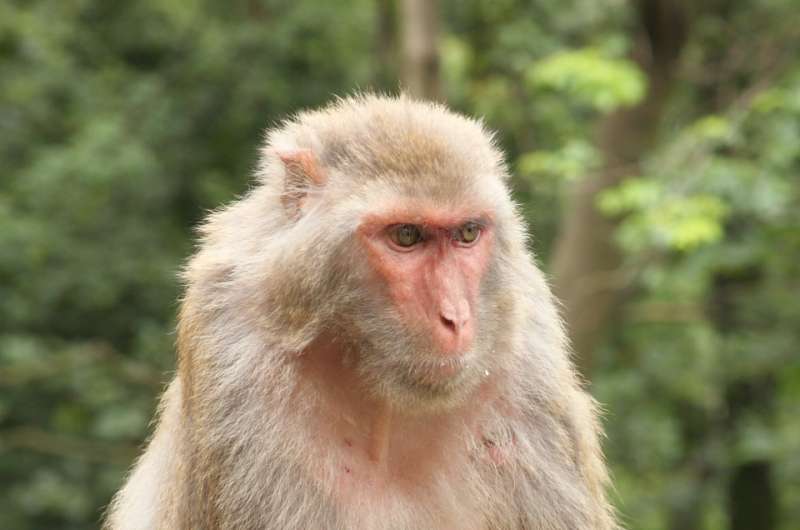July 12, 2016 report
Monkeys found able to weigh risks in gambling experiments

(Phys.org)—A team of researchers with the University of Cambridge in the U.K. has found that Rhesus monkeys are able to weigh the risks between at least two alternatives and to decide when a risk is worth betting on. In their paper published in Proceedings of the National Academy of Sciences, the researchers describe the experiments they carried out, their results and why they believe there is relevance for humans.
Human beings are known for weighing risks and rewards to give themselves the best chance of avoiding the former and gaining more of the latter, but do other animals have such abilities as well? In this latest effort, the researchers put a pair of Rhesus monkeys through a series of tests to find out if they have the ability to gamble, and if so, to what degree.
The experiments all centered around one or the other monkey viewing ladder-like objects displayed via computer monitor—during each trial, the monkey was asked to make a choice (with a joystick) between one of two objects shown—the one on the right, or the one on the left. Doing so led to them being given a special treat—a bit of watered down blackcurrant juice—when they made the right choice. But then the researchers added another factor, risk, by changing the distance between the rungs—the more distance between them, the better the reward. But the ladders were skewed such that when the gap had two rungs above it, payoff would be less than when the gap had two rungs below it. A safe bet was presented when the gap between the rungs was equal. This setup caused the monkeys to weigh the risks of choosing one over the other as they always wanted the largest reward, and that was exactly what the researchers observed. The monkeys consistently went for the wider gap and avoided those options for which the odds seemed stacked against them. The researchers found the monkeys so consistent that their behavior could be predicted using economic decision theory.
The results show, the team reports, that the monkey volunteers were able to make specific choices based on different gambling scenarios after weighing their options—all while hoping to garner themselves the greatest reward.
More information: Wilfried Genest et al. Utility functions predict variance and skewness risk preferences in monkeys, Proceedings of the National Academy of Sciences (2016). DOI: 10.1073/pnas.1602217113
Abstract
Utility is the fundamental variable thought to underlie economic choices. In particular, utility functions are believed to reflect preferences toward risk, a key decision variable in many real-life situations. To assess the validity of utility representations, it is therefore important to examine risk preferences. In turn, this approach requires formal definitions of risk. A standard approach is to focus on the variance of reward distributions (variance-risk). In this study, we also examined a form of risk related to the skewness of reward distributions (skewness-risk). Thus, we tested the extent to which empirically derived utility functions predicted preferences for variance-risk and skewness-risk in macaques. The expected utilities calculated for various symmetrical and skewed gambles served to define formally the direction of stochastic dominance between gambles. In direct choices, the animals' preferences followed both second-order (variance) and third-order (skewness) stochastic dominance. Specifically, for gambles with different variance but identical expected values (EVs), the monkeys preferred high-variance gambles at low EVs and low-variance gambles at high EVs; in gambles with different skewness but identical EVs and variances, the animals preferred positively over symmetrical and negatively skewed gambles in a strongly transitive fashion. Thus, the utility functions predicted the animals' preferences for variance-risk and skewness-risk. Using these well-defined forms of risk, this study shows that monkeys' choices conform to the internal reward valuations suggested by their utility functions. This result implies a representation of utility in monkeys that accounts for both variance-risk and skewness-risk preferences.
Journal information: Proceedings of the National Academy of Sciences
© 2016 Phys.org




















